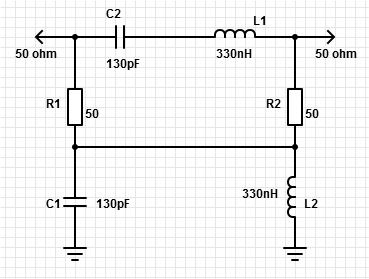neazoi
Advanced Member level 6
Hello,
I have a Tek 491 SA with a coverage from 10MHz and up.
Since I would like to analyze frequencies less than 10MHz (VLF/LW/MW/SW), I would like to know how this can be done without altering internal circuits of the SA.
One way I am thinking is to use an upconverter composed of a mini circuits SRA-6 mixer and a 10MHz crystal LO, so that the entire 3KHz-10MHz band (3khz is the lower RF limit of SRA-6) is converted to 10.003MHz-20MHz out from the mixer, which can be fed into the SA RF input port. A HPF ensures that only the added signals pass through and the double balanced mixer minimizes the LO signal leakage. That way, the SA dial will directly read the RF signal frequency, for example a 1MHz RF signal will be read by the SA dial as 11MHz.
How accurate in terms of frequency or amplitude linearity could this solution be? (the Tek 491 is an old instrument anyway). The fact that a single frequency LO is used should lead to high linearity, affected only by the linearity of the SRA-6.
Are there any suggestions or other ways you can think of?
I have a Tek 491 SA with a coverage from 10MHz and up.
Since I would like to analyze frequencies less than 10MHz (VLF/LW/MW/SW), I would like to know how this can be done without altering internal circuits of the SA.
One way I am thinking is to use an upconverter composed of a mini circuits SRA-6 mixer and a 10MHz crystal LO, so that the entire 3KHz-10MHz band (3khz is the lower RF limit of SRA-6) is converted to 10.003MHz-20MHz out from the mixer, which can be fed into the SA RF input port. A HPF ensures that only the added signals pass through and the double balanced mixer minimizes the LO signal leakage. That way, the SA dial will directly read the RF signal frequency, for example a 1MHz RF signal will be read by the SA dial as 11MHz.
How accurate in terms of frequency or amplitude linearity could this solution be? (the Tek 491 is an old instrument anyway). The fact that a single frequency LO is used should lead to high linearity, affected only by the linearity of the SRA-6.
Are there any suggestions or other ways you can think of?
Attachments
Last edited:

